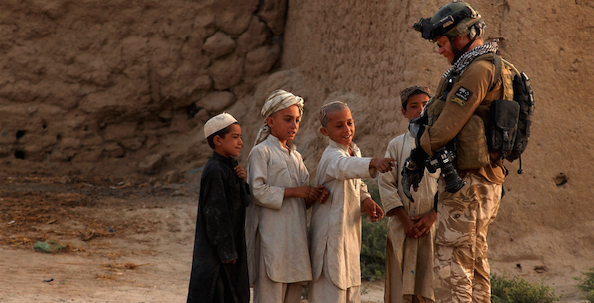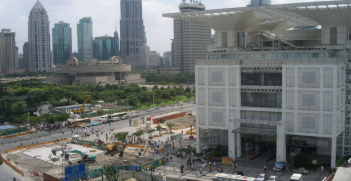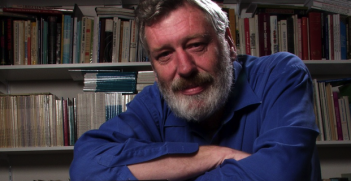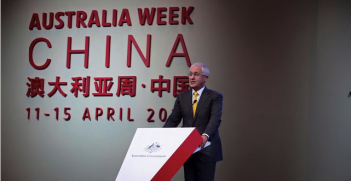The Warrior-Diplomat and the Art of Threat Management

The image of the warrior-diplomat is increasingly fashionable. Yet many of the claims about defence diplomacy remain highly presumptive and do not appear to easily stack up.
The Australian Defence Force is moving into the diplomacy business. While friendly militaries have always exchanged views and learned from each other, an important post-Cold War shift has been new efforts to enhance defence cooperation, identify capacity gaps and build interoperability between the militaries of countries in order to confront increasingly complex international challenges. This shift has been strongly embraced in Asia and by the ADF.
Defence diplomacy itself has become integrated into a wide range of formal and informal activities and involves a patchwork of areas that include equipment transfers and loans, education/mentoring programs, military conferences and low-intensity joint exercises and training. The broad aim is to build confidence, reduce mistrust, address shared security interests and ultimately change the “strategic” relationships between countries. To put it another way, an overarching consideration has been whether plain-speaking soldiers will cut through and solve long-running regional anxieties where silver-tongued diplomats have grown stale.
The Gillard Government’s 2013 Australian Defence White Paper had strongly embraced this logic, describing defence diplomacy as a “strategic necessity and strategic asset”. Many in the ADF have also championed it as relevant on a strategic level, not least because it gives them a positive peacetime role in Asia amidst an arena of shifting regional diplomatic and political tensions.
Alternatively, the 2016 Australian Defence White Paper was much more modest in its expectations, although still signposting that international engagement remained a core organising principle in force posture. While many problems remain including the baseline metrics used to assess performance, this general line of approach by the Turnbull team was a step in the right direction.
Our most recent research paper had examined Australia’s broad slant to peacetime military engagement and the viability of defence diplomacy as a strategy and policy – that is finding the right mix of inputs and outputs to achieve stated goals. It concluded that defence diplomacy offers a lot of attraction and a range of open-ended promises but evidence of its success at the “strategic” level is rare while the costs and potential trade-offs are often much higher than presumed. In short, future models must take into account that the transformative ambitions related to defence diplomacy efforts have a track-record of being badly overstated.
The first and central claim of many advocates is that defence diplomacy can change the relationship between conflicting states. If militaries are more transparent, then states can minimise misperception and acts of aggression can be diminished. Or they will be more likely to find ways to overcome historic mistrust and so build momentum towards the peaceful resolution of disputes such as in the South China Sea.
Yet the evidence for these sort of one-dimensional transformative claims remains weak. Too many variables exist and there are no straightforward examples of military visits and cooperation directly influencing the way countries think about their diplomatic relationships, their national interests or when they use force when faced with significant political differences.
Defence diplomacy has also been touted as a success in helping Australia maintain its leadership in the South Pacific. Yet for all the practical good of personal contacts and the additional patrol boats, humanitarian aid and mine removal exercises have done to help people on the ground, it is not clear the mindsets of regional governments are any more loyal to Australia.
Another claim behind the enthusiasm for defence diplomacy is that it is a cost-effective use of our armed forces. This is certainly a helpful sales pitch to keep up the appearance of best practice activities at a time of demand for fiscal prudence. But again the claims do not automatically add up.
Compared to fighting a war, defence diplomacy is relatively cheap. Yet is should be recognised that sending our military around the region has many costs, both financial and in opportunities forgone. For instance, developing partner interoperability does involve several cross-cutting inputs that are accompanied with acquisition processes and strong resource and financial demands. At the same time, the more time members of the ADF spend talking to their counterparts in seminars and other related activities, the less time they spend studying, planning and conducting practical exercises. Institutional oversight has plenty of room for improvement.
However, that does not mean the whole concept of defence diplomacy should be abandoned. The common thread of overblown claims was that they aimed for a “strategic” impact.
We found that defence diplomacy requires whole-of-government support, must incorporate issues related to sustainability as well as partner expectations and will work most effectively if the emphasis is on the defence, not the diplomacy part. At the tactical level, there are real and reciprocal security benefits to having the ADF spending time in the region. For instance, work in areas like humanitarian assistance and disaster relief does generate goodwill while giving attention to burden-sharing to deal with existing challenges in an aid-like fashion. Or building up the capacity of our immediate neighbours to mitigate drug trafficking or piracy does offer opportunities to better link activities through operational concepts and tangible outcomes.
But despite the Turnbull Government’s efforts to avoid exaggerated and potentially counter-productive policy initiatives and prescriptions, an ongoing temptation for policy-makers will be to oversell the benefits of defence engagement. But without careful management of expectations and the setting of realistic goals that are directly allied to where to prioritise activities as well as budgeting capability, problems about how to most effectively link strategy, resources and capabilities will remain.
The successful delivery and adaption of defence engagement must focus on areas where there is a clear relationship between the ways and means characterised by the many tactical and operational benefits defence diplomacy programs can provide. At the same time, this must involve an appreciation that the utility of military-to-military engagements will remain highly dependent on and vulnerable to major power plays and shifting geo-political landscapes. As such, the overall need for clear doctrinal guidance remains a crucial component in navigating the future progression of defence diplomacy engagements.
Dr Daniel Baldino is a senior lecturer and discipline head of the Politics and International Relations program at the University of Notre Dame. Dr Andrew Carr is a Research Fellow in the Strategic and Defence Studies Centre at the Australian National University. This piece is adapted from their journal article in the Australian Journal of International Affairs, entitled “Defence diplomacy and the Australian defence force: smokescreen or strategy?”.





